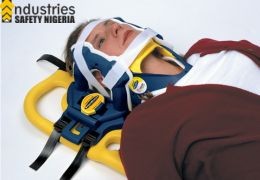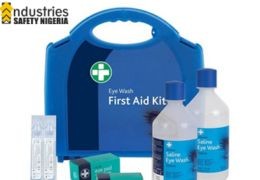When it comes to motorcycle safety, the helmet often steals the spotlight—and rightfully so. It’s...
Search our journal
Journal categories
Latest posts
-
 Motorcycle Safety Gear: What You Need Beyond a HelmetContinue Reading
Motorcycle Safety Gear: What You Need Beyond a HelmetContinue Reading -
 The Triangular Protector: A Simple Tool for Maximum Roadside SafetyContinue Reading
The Triangular Protector: A Simple Tool for Maximum Roadside SafetyContinue ReadingIn emergency roadside situations, visibility and safety are critical. Whether you're dealing with...
-
 Bright, Safe, Seen: Everything You Need to Know About Reflective VestsContinue Reading
Bright, Safe, Seen: Everything You Need to Know About Reflective VestsContinue ReadingIn a world where visibility can mean the difference between safety and danger, reflective vests...
-
 Understanding Head Immobilizers: Essential Equipment in Emergency CareContinue Reading
Understanding Head Immobilizers: Essential Equipment in Emergency CareContinue ReadingWhen it comes to emergency medical care, especially trauma management, every second counts and...
-
 Essential Guide to Eyewash First Aid Kits: Why Every Workplace Needs OneContinue Reading
Essential Guide to Eyewash First Aid Kits: Why Every Workplace Needs OneContinue ReadingWhen it comes to workplace safety, eye protection is often overlooked until an emergency occurs....
Popular posts
-
 Motorcycle Safety Gear: What You Need Beyond a HelmetWhen it comes to motorcycle safety, the helmet often steals the spotlight—and rightfully so. It’s...Continue Reading
Motorcycle Safety Gear: What You Need Beyond a HelmetWhen it comes to motorcycle safety, the helmet often steals the spotlight—and rightfully so. It’s...Continue Reading -
 The Triangular Protector: A Simple Tool for Maximum Roadside SafetyIn emergency roadside situations, visibility and safety are critical. Whether you're dealing with...Continue Reading
The Triangular Protector: A Simple Tool for Maximum Roadside SafetyIn emergency roadside situations, visibility and safety are critical. Whether you're dealing with...Continue Reading -
 Bright, Safe, Seen: Everything You Need to Know About Reflective VestsIn a world where visibility can mean the difference between safety and danger, reflective vests...Continue Reading
Bright, Safe, Seen: Everything You Need to Know About Reflective VestsIn a world where visibility can mean the difference between safety and danger, reflective vests...Continue Reading -
 Understanding Head Immobilizers: Essential Equipment in Emergency CareWhen it comes to emergency medical care, especially trauma management, every second counts and...Continue Reading
Understanding Head Immobilizers: Essential Equipment in Emergency CareWhen it comes to emergency medical care, especially trauma management, every second counts and...Continue Reading -
 Essential Guide to Eyewash First Aid Kits: Why Every Workplace Needs OneWhen it comes to workplace safety, eye protection is often overlooked until an emergency occurs....Continue Reading
Essential Guide to Eyewash First Aid Kits: Why Every Workplace Needs OneWhen it comes to workplace safety, eye protection is often overlooked until an emergency occurs....Continue Reading
Featured posts
-
 Motorcycle Safety Gear: What You Need Beyond a HelmetWhen it comes to motorcycle safety, the helmet often steals the spotlight—and rightfully so. It’s...Continue Reading
Motorcycle Safety Gear: What You Need Beyond a HelmetWhen it comes to motorcycle safety, the helmet often steals the spotlight—and rightfully so. It’s...Continue Reading -
 The Triangular Protector: A Simple Tool for Maximum Roadside SafetyIn emergency roadside situations, visibility and safety are critical. Whether you're dealing with...Continue Reading
The Triangular Protector: A Simple Tool for Maximum Roadside SafetyIn emergency roadside situations, visibility and safety are critical. Whether you're dealing with...Continue Reading -
 Bright, Safe, Seen: Everything You Need to Know About Reflective VestsIn a world where visibility can mean the difference between safety and danger, reflective vests...Continue Reading
Bright, Safe, Seen: Everything You Need to Know About Reflective VestsIn a world where visibility can mean the difference between safety and danger, reflective vests...Continue Reading -
 Understanding Head Immobilizers: Essential Equipment in Emergency CareWhen it comes to emergency medical care, especially trauma management, every second counts and...Continue Reading
Understanding Head Immobilizers: Essential Equipment in Emergency CareWhen it comes to emergency medical care, especially trauma management, every second counts and...Continue Reading -
 Essential Guide to Eyewash First Aid Kits: Why Every Workplace Needs OneWhen it comes to workplace safety, eye protection is often overlooked until an emergency occurs....Continue Reading
Essential Guide to Eyewash First Aid Kits: Why Every Workplace Needs OneWhen it comes to workplace safety, eye protection is often overlooked until an emergency occurs....Continue Reading











Latest comments